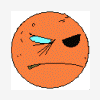Here's the brief design of my d3d12 app which loads an image an displays it on screen.
After InitializeWindow(), I initialize D3D (InitD3D), then Render() and receive widow messages in a loop.
InitD3D()
As you can see I haven't set up a root signature and pso. It's because I'm not calling DrawInstanced() in my render. My understanding is that if I point RTV to swap chainback buffers and call OMsetrendertarget(), I only need to call Present() to display my image.
Is this wrong? If yes, Is it necessary that I should set up a basic root signature and pso and call DrawInstanced() ?
PS: I started graphics programming recently with dx12.





